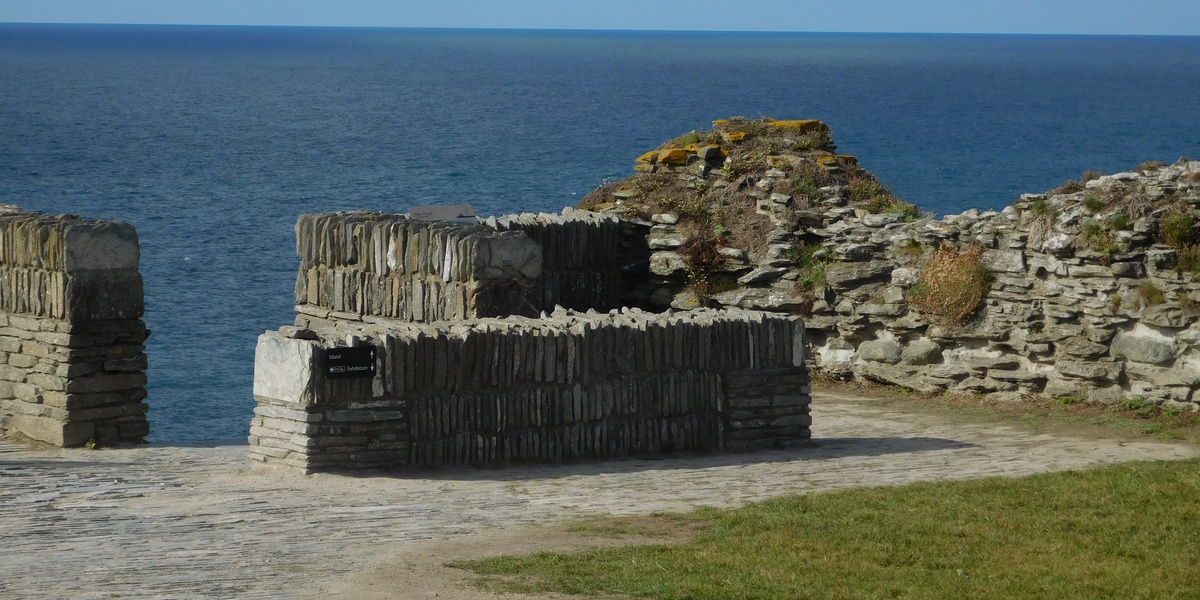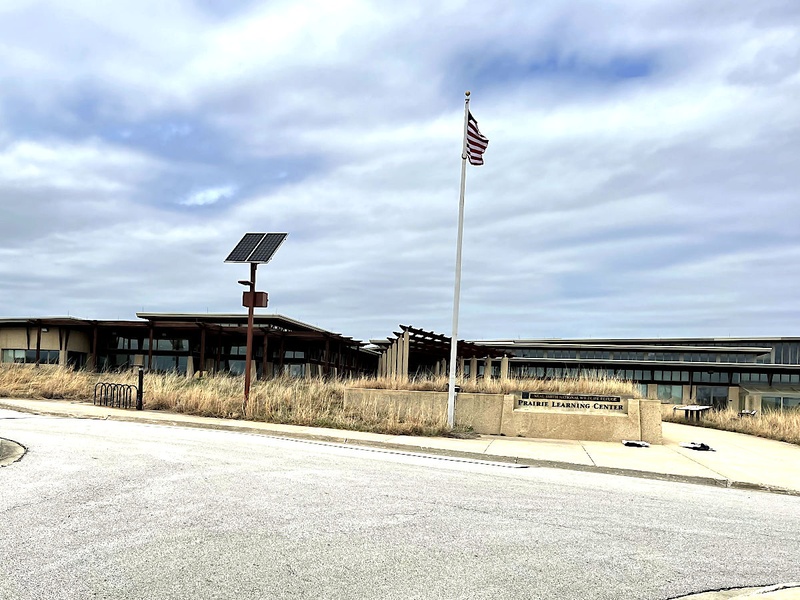England wears its history on the landscape: weathered stone, crumbling walls and overgrown keeps mark centuries of settlement, conflict and changing land use. Walking or driving between sites offers a compact way to read the past across counties, from coastal strongholds to inland manors.
There are 59 Ruins in England, ranging from Ashby de la Zouch Castle,Wolvesey Castle; each entry is organized with County,Coordinates (lat,lon),Access (public/private/notes) so you can quickly see where a ruin sits and whether it’s visitable — you’ll find below.
How can I plan visits to multiple ruins in one trip?
Group sites by county or proximity using the coordinates provided; check the Access column before you go, pack appropriate footwear, and allow extra time for narrow lanes or limited parking — local tourism sites or parish pages often note seasonal restrictions or guided tour opportunities.
What should I know about visiting ruins on private land?
Many ruins are publicly accessible, but some sit on private property or have restricted access; if Access lists private or notes restrictions, seek permission from the landowner or look for nearby public footpaths and observe any signage to avoid trespass.
Ruins in England
| Name | County | Coordinates (lat,lon) | Access (public/private/notes) |
|---|---|---|---|
| Housesteads Roman Fort | Northumberland | 55.01,-2.33 | Public; National Trust/EH site; entry fee applies. |
| Dunstanburgh Castle | Northumberland | 55.49,-1.60 | Public; English Heritage site; entry fee applies. |
| Lindisfarne Priory | Northumberland | 55.67,-1.80 | Public; English Heritage site; entry fee applies. |
| Warkworth Castle | Northumberland | 55.34,-1.61 | Public; English Heritage site; entry fee. |
| Furness Abbey | Cumbria | 54.13,-3.19 | Public; English Heritage site; entry fee. |
| Brougham Castle | Cumbria | 54.66,-2.72 | Public; English Heritage site; entry fee. |
| Hardknott Roman Fort | Cumbria | 54.40,-3.21 | Public; National Trust; free access; remote location. |
| Whitby Abbey | North Yorkshire | 54.49,-0.61 | Public; English Heritage site; entry fee. |
| Rievaulx Abbey | North Yorkshire | 54.26,-1.17 | Public; English Heritage site; entry fee. |
| Fountains Abbey | North Yorkshire | 54.11,-1.58 | Public; National Trust/EH site; entry fee. |
| Scarborough Castle | North Yorkshire | 54.29,-0.39 | Public; English Heritage site; entry fee. |
| Bolton Abbey | North Yorkshire | 53.98,-1.89 | Public; privately owned estate; parking fee. |
| Kirkstall Abbey | West Yorkshire | 53.82,-1.61 | Public; council owned; free access. |
| Middleham Castle | North Yorkshire | 54.29,-1.81 | Public; English Heritage site; entry fee. |
| Barnard Castle | Durham | 54.54,-1.93 | Public; English Heritage site; entry fee. |
| Finchale Priory | Durham | 54.82,-1.59 | Public; English Heritage site; entry fee. |
| Whalley Abbey | Lancashire | 53.82,-2.41 | Public; privately owned; entry fee. |
| Beeston Castle | Cheshire | 53.13,-2.69 | Public; English Heritage site; entry fee. |
| Peveril Castle | Derbyshire | 53.34,-1.79 | Public; English Heritage site; entry fee. |
| Kenilworth Castle | Warwickshire | 52.35,-1.59 | Public; English Heritage site; entry fee. |
| Coventry Cathedral | West Midlands | 52.41,-1.51 | Public; free to enter; donations welcome. |
| Witley Court | Worcestershire | 52.27,-2.36 | Public; English Heritage site; entry fee. |
| Ashby de la Zouch Castle | Leicestershire | 52.75,-1.47 | Public; English Heritage site; entry fee. |
| Haughmond Abbey | Shropshire | 52.73,-2.68 | Public; English Heritage site; free access. |
| Wenlock Priory | Shropshire | 52.60,-2.55 | Public; English Heritage site; entry fee. |
| Goodrich Castle | Herefordshire | 51.88,-2.62 | Public; English Heritage site; entry fee. |
| Castle Acre Priory | Norfolk | 52.70,0.69 | Public; English Heritage site; entry fee. |
| Binham Priory | Norfolk | 52.92,0.95 | Public; English Heritage site; free access. |
| Burgh Castle | Norfolk | 52.59,1.65 | Public; English Heritage site; free access. |
| Bury St Edmunds Abbey | Suffolk | 52.24,0.72 | Public; council owned; free access to Abbey Gardens. |
| Leiston Abbey | Suffolk | 52.22,1.55 | Public; privately owned; free access. |
| Hadleigh Castle | Essex | 51.54,0.61 | Public; English Heritage site; free access. |
| Rochester Castle | Kent | 51.39,0.50 | Public; English Heritage site; entry fee. |
| Reculver Towers | Kent | 51.38,1.19 | Public; English Heritage site; free access. |
| St Augustine’s Abbey | Kent | 51.28,1.09 | Public; English Heritage site; entry fee. |
| Waverley Abbey | Surrey | 51.20,-0.74 | Public; English Heritage site; free access. |
| Battle Abbey | East Sussex | 50.92,0.49 | Public; English Heritage site; entry fee. |
| Pevensey Castle | East Sussex | 50.82,0.33 | Public; English Heritage site; entry fee. |
| Hastings Castle | East Sussex | 50.86,0.59 | Public; privately owned; entry fee. |
| Lewes Priory | East Sussex | 50.87,0.01 | Public; privately owned; free access to Priory Park. |
| Portchester Castle | Hampshire | 50.84,-1.11 | Public; English Heritage site; entry fee. |
| Wolvesey Castle | Hampshire | 51.06,-1.31 | Public; English Heritage site; free access. |
| Netley Abbey | Hampshire | 50.89,-1.37 | Public; English Heritage site; free access. |
| Old Sarum | Wiltshire | 51.09,-1.80 | Public; English Heritage site; entry fee. |
| Old Wardour Castle | Wiltshire | 51.04,-2.09 | Public; English Heritage site; entry fee. |
| Glastonbury Abbey | Somerset | 51.15,-2.71 | Public; privately owned; entry fee. |
| Farleigh Hungerford Castle | Somerset | 51.31,-2.28 | Public; English Heritage site; entry fee. |
| Corfe Castle | Dorset | 50.64,-2.06 | Public; National Trust site; entry fee required. |
| Sherborne Old Castle | Dorset | 50.95,-2.51 | Public; English Heritage site; entry fee. |
| Okehampton Castle | Devon | 50.73,-4.01 | Public; English Heritage site; entry fee. |
| Berry Pomeroy Castle | Devon | 50.45,-3.64 | Public; English Heritage site; entry fee. |
| Tintagel Castle | Cornwall | 50.67,-4.76 | Public; English Heritage site; entry fee and timed ticket. |
| Launceston Castle | Cornwall | 50.63,-4.36 | Public; English Heritage site; entry fee. |
| Restormel Castle | Cornwall | 50.42,-4.72 | Public; English Heritage site; entry fee. |
| Botallack Mine | Cornwall | 50.15,-5.69 | Public; National Trust; free access to coastal paths. |
| Wheal Coates | Cornwall | 50.31,-5.21 | Public; National Trust; free access to coastal paths. |
| Hailes Abbey | Gloucestershire | 52.00,-1.96 | Public; National Trust/EH site; entry fee. |
| Muchelney Abbey | Somerset | 51.02,-2.82 | Public; English Heritage site; entry fee. |
| Ludgershall Castle | Wiltshire | 51.25,-1.62 | Public; English Heritage site; free access. |
Images and Descriptions
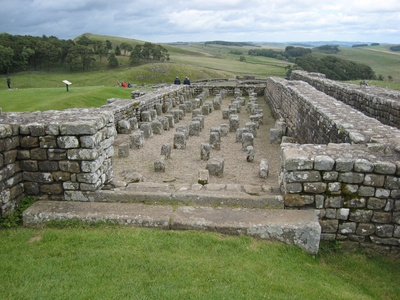
Housesteads Roman Fort
The most complete Roman fort in Britain, set dramatically on Hadrian’s Wall. Explore ruined barracks, a hospital, and commander’s house, and see the famous communal latrines. It offers incredible views over the wild Northumberland landscape.
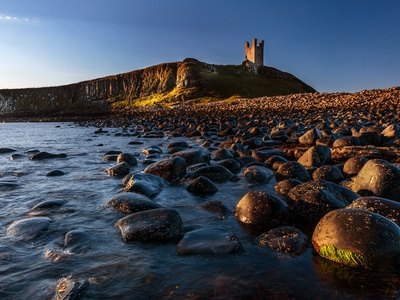
Dunstanburgh Castle
The spectacular coastal ruins of a 14th-century castle. Reached via a beautiful walk along the coast, its massive gatehouse and Lilburn Tower stand as dramatic silhouettes against the North Sea, defining the Northumberland coastline.
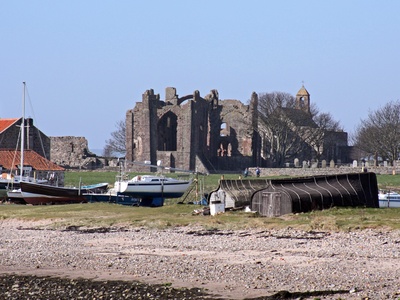
Lindisfarne Priory
The ruins of a medieval Benedictine priory on Holy Island. The site of St. Cuthbert’s original monastery, its graceful red sandstone arches are an iconic and deeply historic landmark, accessible only at low tide.
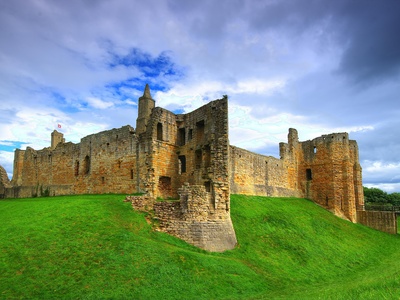
Warkworth Castle
A mighty medieval fortress towering over the River Coquet. While the bailey walls are impressive, the uniquely cross-shaped 15th-century keep is the star, remaining a magnificent, largely complete shell to explore.
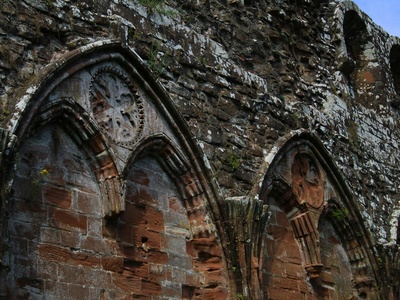
Furness Abbey
Once one of England’s wealthiest Cistercian monasteries, its extensive ruins of ornate red sandstone are remarkably well-preserved. Highlights include the soaring church walls, the chapter house, and the cloisters set in a peaceful valley.
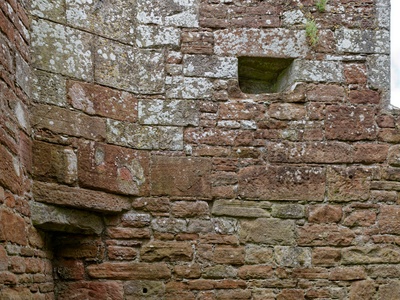
Brougham Castle
Standing beside the River Eamont, this 13th-century castle features a formidable stone keep and the impressive ‘Tower of League’. It was a key border fortress and a grand residence for the powerful Clifford family.
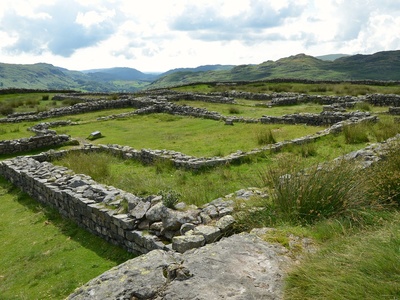
Hardknott Roman Fort
The remote and stunningly-sited ruins of a Roman fort high in the Cumbrian fells. With 360-degree views, you can trace the fort’s walls, parade ground, and bathhouse, imagining the life of soldiers in this wild outpost.
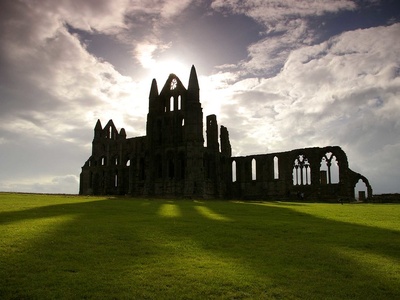
Whitby Abbey
Perched dramatically on a cliff, these Gothic ruins of a Benedictine monastery famously inspired Bram Stoker’s ‘Dracula’. Explore the haunting remains which offer stunning views over the North Sea and the historic town of Whitby below.
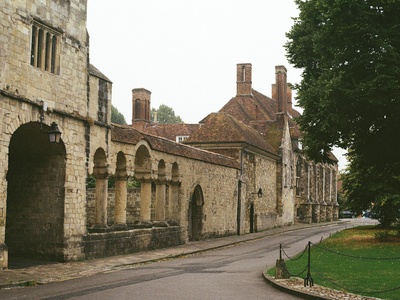
Rievaulx Abbey
The romantic and atmospheric ruins of one of England’s first Cistercian abbeys, set in a tranquil valley. Wander through the soaring choir of the abbey church and discover the story of its powerful medieval past.
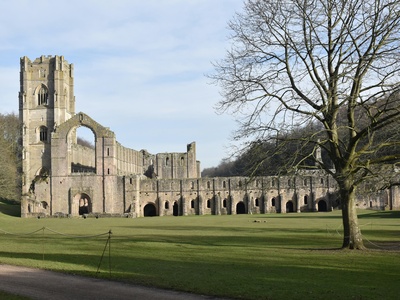
Fountains Abbey
One of England’s largest and best-preserved Cistercian monasteries. The vast, atmospheric ruins are set within the stunning Studley Royal Water Garden, forming a UNESCO World Heritage Site. The cellarium is particularly impressive.
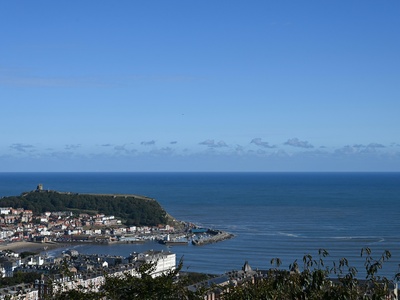
Scarborough Castle
This former medieval royal fortress dominates the town from its rocky headland. Explore the ruined 12th-century keep and curtain walls while enjoying panoramic views of the North and South Bays of Scarborough.
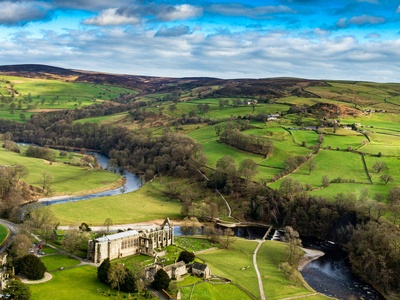
Bolton Abbey
The beautiful ruins of a 12th-century Augustinian priory on the banks of the River Wharfe. The nave of the original church is still in use, but the ruined choir and priory buildings are open to explore.

Kirkstall Abbey
A remarkably complete Cistercian monastery ruin in a public park in Leeds. Founded in 1152, its roofless church, cloisters, and chapter house are well-preserved, offering a fantastic insight into monastic life.

Middleham Castle
Once the powerful childhood home of Richard III, this enormous fortress is now a fascinating ruin. Its massive stone keep is one of the largest in England, with a complex web of rooms to explore.

Barnard Castle
Set on a high rock above the River Tees, this castle ruin has stunning views. Named after its 12th-century founder, Bernard de Balliol, it later became a favourite residence of Richard III.

Finchale Priory
The peaceful and picturesque ruins of a 13th-century Benedictine priory on the banks of the River Wear. Originally the hermitage of St. Godric, it became a holiday retreat for the monks of Durham Cathedral.

Whalley Abbey
The romantic ruins of a 14th-century Cistercian abbey in the heart of the Ribble Valley. The site includes substantial remains of the church, cloisters, and an impressive gatehouse which is still in use today.

Beeston Castle
A ‘Castle of the Rock’ with spectacular views across the Cheshire Plain. The ruins include a formidable outer ward and a dramatic inner ward perched on a crag, with its deep well said to be the hiding place of Richard II’s treasure.

Peveril Castle
The ruins of one of England’s earliest Norman fortresses, built by William the Conqueror’s son. Its keep stands high above the village of Castleton, offering breathtaking views over the Peak District.

Kenilworth Castle
One of England’s most magnificent castle ruins, showcasing centuries of history from Norman keep to Elizabethan palace. Famous as the site of Robert Dudley’s lavish entertainment for Queen Elizabeth I.

Coventry Cathedral
The haunting, roofless shell of the 14th-century Gothic cathedral, bombed during the Blitz in 1940. Left as a memorial, it stands beside the striking modern cathedral as a powerful symbol of destruction and reconciliation.
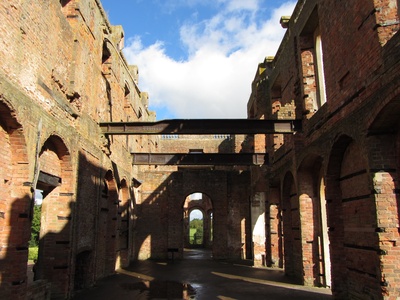
Witley Court
The spectacular ruins of a vast 19th-century Italianate mansion, gutted by a fire in 1937. Visitors can explore the palatial shell and its restored gardens, which feature the colossal Perseus and Andromeda fountain.
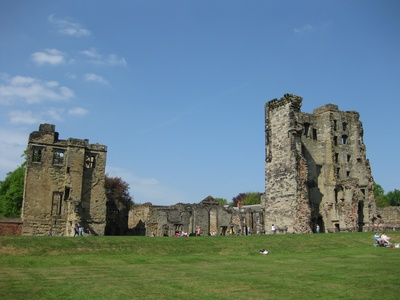
Ashby de la Zouch Castle
Made famous by Sir Walter Scott’s novel ‘Ivanhoe’. The castle began as a Norman manor house and was later fortified with an impressive keep, the Hastings Tower, which you can still climb for fantastic views.
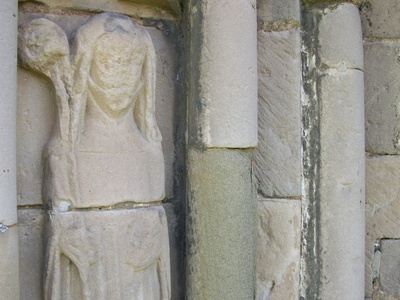
Haughmond Abbey
The extensive remains of an Augustinian abbey, showcasing beautiful 12th and 14th-century architecture. The chapter house, with its three ornate arches and statues of saints, is a particular highlight.
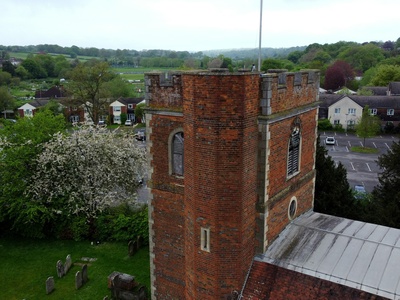
Wenlock Priory
The ruins of a large and wealthy Cluniac priory, known for its stunning Norman chapter house and the elaborate 13th-century church. The beautifully decorated lavabo (communal wash basin) is another notable feature.
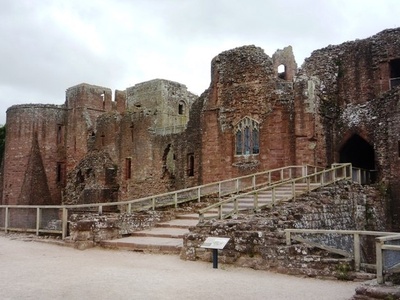
Goodrich Castle
One of the best-preserved medieval castles in England, perched above the River Wye. It boasts a Norman keep, a sprawling courtyard, and a formidable gatehouse, with evidence of damage from the Civil War.
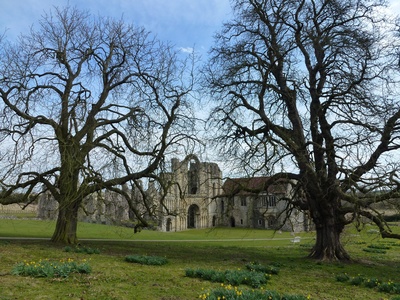
Castle Acre Priory
One of the largest and best-preserved monastic sites in England. The magnificent 12th-century west front of the priory church survives almost to its full height, along with extensive remains of the cloister and domestic buildings.
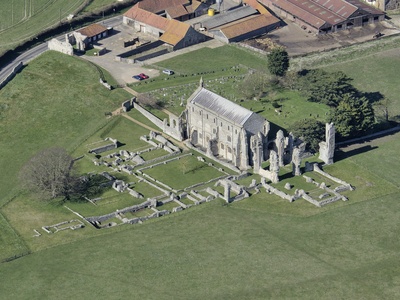
Binham Priory
The impressive ruins of a Benedictine priory where the nave still serves as the local parish church. Explore the remains of the central tower and chancel, which give a sense of the priory’s original grand scale.
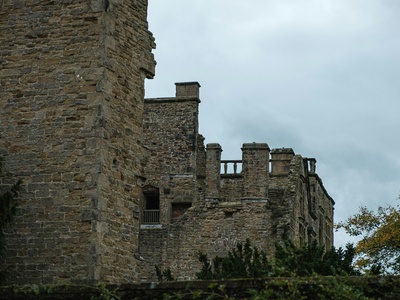
Burgh Castle
One of the best-preserved Roman forts in the country, part of the ‘Saxon Shore’ defences. Three of its massive stone walls survive to a remarkable height, offering superb views over the Broads.
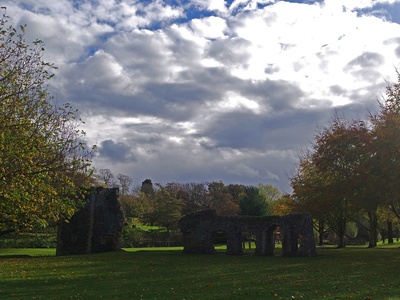
Bury St Edmunds Abbey
Once one of the richest and most powerful Benedictine monasteries in England. Today, its extensive ruins, including the massive Norman gate tower and remains of the vast abbey church, lie within a beautiful public park.
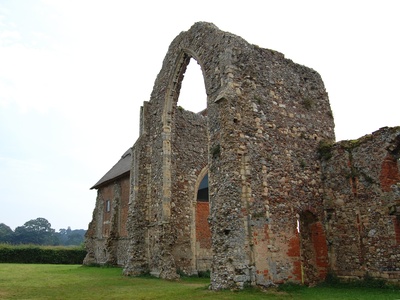
Leiston Abbey
The impressive 14th-century ruins of a Premonstratensian abbey. Notable features include the vaulted Lady Chapel and a rare 16th-century brick gatehouse. The abbey is still used as a classical music retreat.
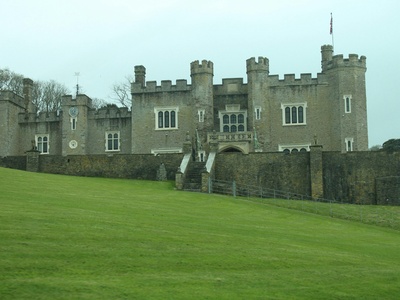
Hadleigh Castle
The romantic ruins of a royal castle, later fortified by Edward III, overlooking the Thames estuary. Its twin drum towers create a dramatic silhouette, famously painted by John Constable.
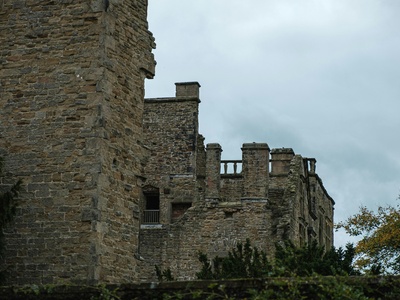
Rochester Castle
This imposing fortress has one of the tallest and best-preserved Norman keeps in England. Though the interior is a ruin, you can climb to the top for commanding views of the city and the River Medway.
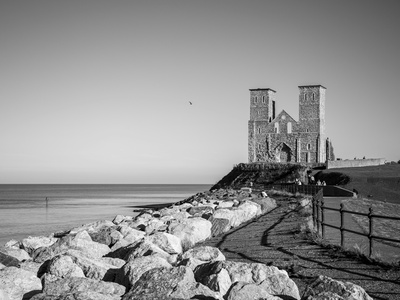
Reculver Towers
The striking twin 12th-century towers are all that remain of a medieval church built within the walls of a Roman ‘Saxon Shore’ fort. They are a prominent landmark on the Kent coast, saved from demolition to serve as a navigational aid.
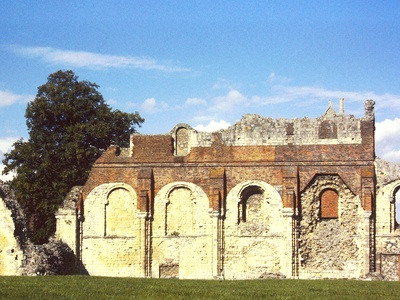
St Augustine’s Abbey
Part of Canterbury’s World Heritage Site, these are the ruins of the abbey founded by St Augustine in 598. It was a burial place for Anglo-Saxon kings of Kent and an important centre of learning.
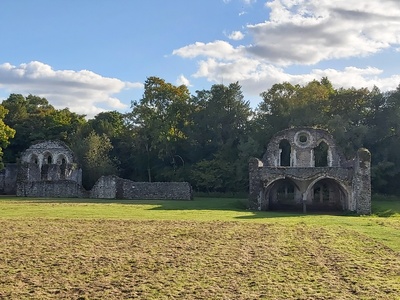
Waverley Abbey
The very first Cistercian monastery in England, founded in 1128. Its picturesque ruins, set beside the River Wey, include the impressive vaulted undercroft of the monks’ dormitory and the soaring gable end of the south transept.
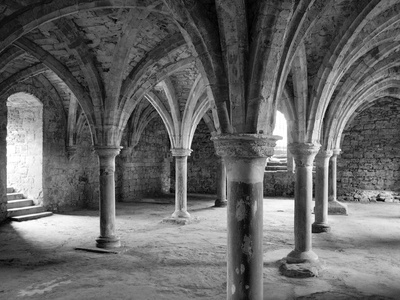
Battle Abbey
Built by William the Conqueror on the site of the Battle of Hastings. You can stand on the very spot where King Harold is said to have fallen and explore the atmospheric ruins of the abbey’s church and cloister.
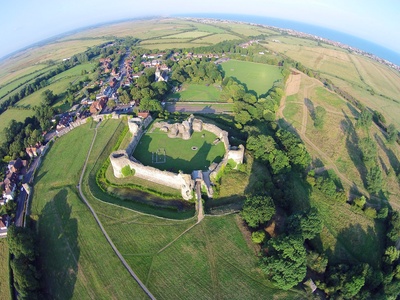
Pevensey Castle
A castle with a history spanning 16 centuries. Its outer walls are from a Roman ‘Saxon Shore’ fort, while inside are the ruins of a Norman keep and a medieval castle. It was a key defensive site from Roman times to WWII.
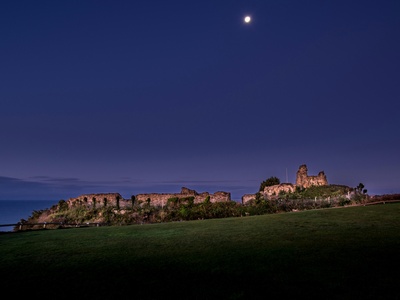
Hastings Castle
The ruins of the first Norman castle built in England, founded by William the Conqueror in 1066. Perched high on a cliff, it offers fantastic views and features remains of the keep, chapel, and dungeons.
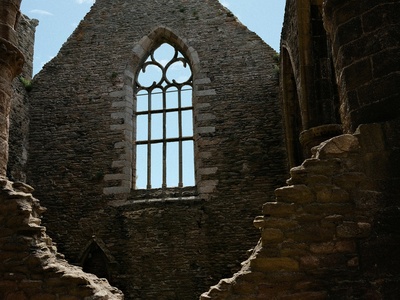
Lewes Priory
The atmospheric remains of the Priory of St Pancras, the first Cluniac monastery in England. Although much was destroyed, substantial flint walls, parts of the church, and the impressive ‘dorter’ (dormitory) survive.
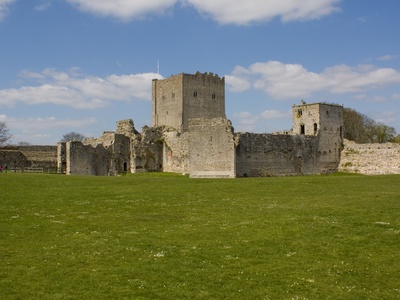
Portchester Castle
The most impressive and best-preserved of the Roman ‘Saxon Shore’ forts. Within the towering Roman walls stands a magnificent Norman keep and a later royal palace, making it a microcosm of English history.
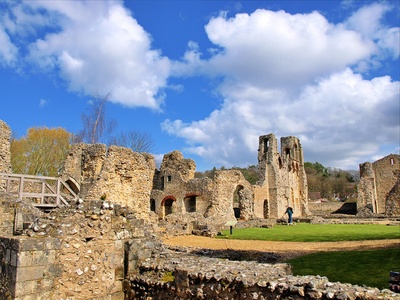
Wolvesey Castle
The extensive ruins of a magnificent medieval bishop’s palace in Winchester. For over 500 years, it was one of the grandest residences in England, home to the powerful and wealthy Bishops of Winchester.
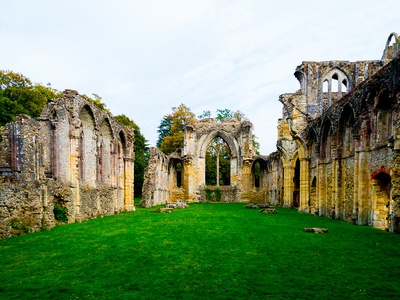
Netley Abbey
Considered the most complete surviving Cistercian monastery in southern England. The beautiful and romantic ruins, which inspired poets and artists like John Constable, include the church, cloister, and domestic buildings.
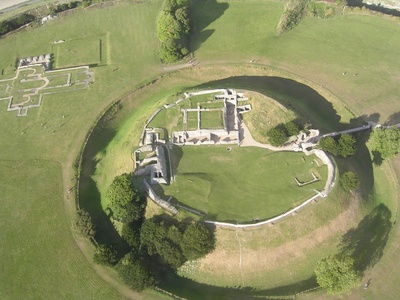
Old Sarum
The site of the original Salisbury settlement, featuring ruins within a massive Iron Age hillfort. Explore the remains of the Norman castle’s keep and the foundations of the original cathedral, abandoned in the 13th century.
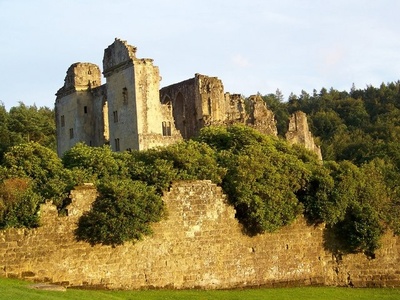
Old Wardour Castle
A stunningly picturesque, hexagonal castle ruin set beside a lake. Built in the 14th century for luxury, it was damaged during the Civil War. Visitors can explore its grand rooms and climb the tower for beautiful views.
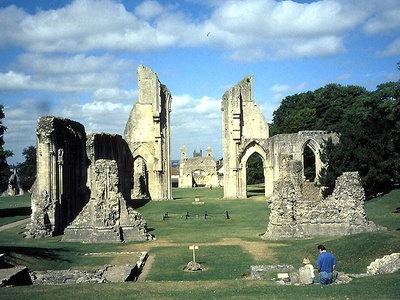
Glastonbury Abbey
A hugely important and deeply historic site, steeped in legend as the possible burial place of King Arthur. The impressive ruins of the abbey church, particularly the Lady Chapel, hint at its former power and wealth.
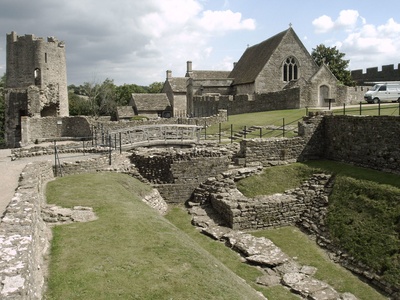
Farleigh Hungerford Castle
A ruined 14th-century castle with plenty to explore, including two courtyards, the chapel, and fortified gatehouse. The chapel contains impressive family tombs and rare medieval wall paintings.
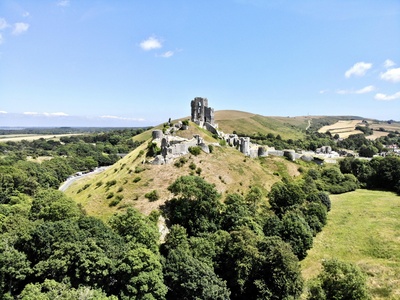
Corfe Castle
A dramatic ruin crowning a hill, with a history spanning over 1,000 years. Partially demolished in the 17th-century English Civil War, its shattered keep and gateways create a powerful silhouette against the Dorset landscape.
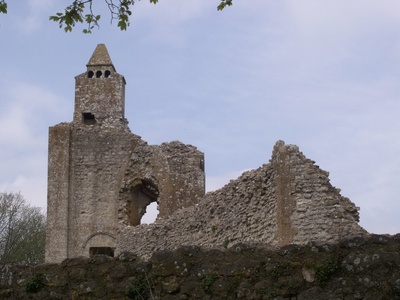
Sherborne Old Castle
The extensive ruins of a 12th-century castle, built as a fortified palace for the powerful Bishop of Salisbury. It was famously besieged twice during the English Civil War, leading to its eventual slighting by Parliament.
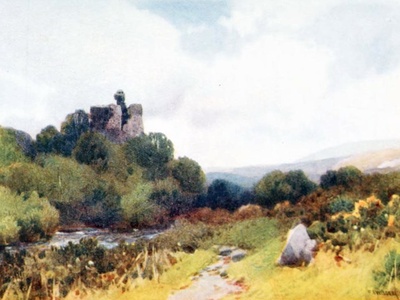
Okehampton Castle
The romantic ruins of the largest castle in Devon, picturesquely situated above the River Okement. The substantial remains of its Norman motte and keep, along with the later great hall and kitchens, are ripe for exploration.
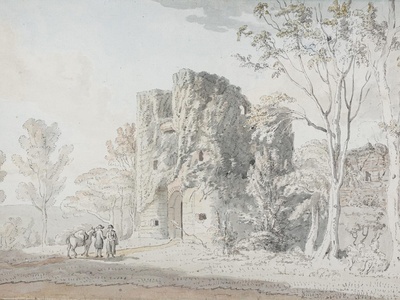
Berry Pomeroy Castle
Tucked away in a deep wooded valley, this is a romantic ruin with a reputation for being one of England’s most haunted castles. It combines the remains of a 15th-century fortress with a magnificent, but unfinished, Elizabethan mansion.
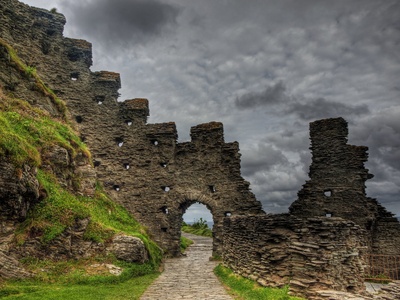
Tintagel Castle
A spectacular site where history meets legend. The ruins of a 13th-century castle are split between the mainland and a rugged headland, linked by a dramatic footbridge. It is forever associated with the legend of King Arthur.
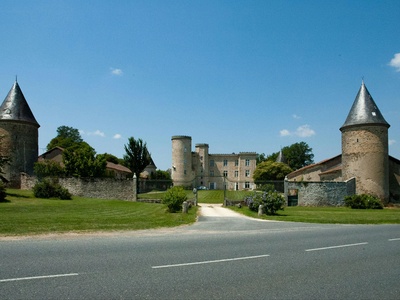
Launceston Castle
Dominating the town, this castle features an unusual 13th-century round tower built by Richard, Earl of Cornwall, set on a much earlier Norman motte. You can climb to the top for superb views of the surrounding countryside.
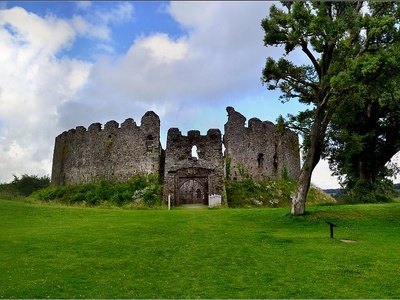
Restormel Castle
One of the most remarkable castles in Britain, known for its perfectly circular shell-keep. Set on a Norman motte, the 13th-century ruin stands in a beautiful location with commanding views over the Fowey valley.
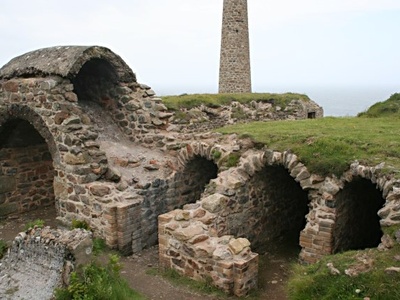
Botallack Mine
Part of the Cornish Mining World Heritage Site, these iconic 19th-century engine houses cling precariously to the cliffs. The Crowns Engine Houses, built at the sea’s edge, represent the peak of Cornwall’s industrial heritage.
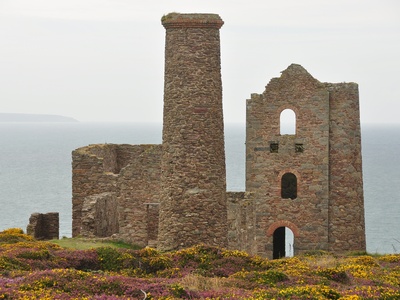
Wheal Coates
A classic Cornish mining ruin in a stunning coastal setting. The Towanroath engine house, perched dramatically on the cliffs above a sea cave, is one of Cornwall’s most photographed and iconic industrial landmarks.
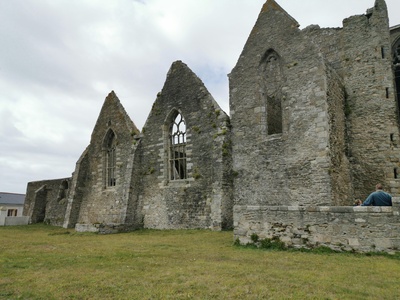
Hailes Abbey
Founded in 1246, the ruins of this Cistercian abbey once housed a holy relic, the ‘Blood of Hailes’, making it a major pilgrimage site. A small site museum displays finds including stunning medieval floor tiles.
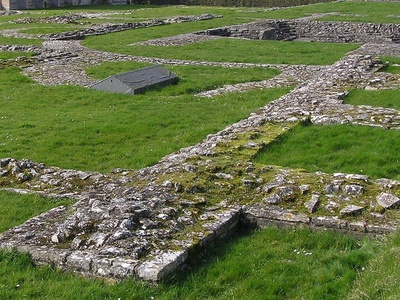
Muchelney Abbey
The fascinating remains of a Benedictine abbey on the Somerset Levels. Highlights include the richly decorated cloister walk and the stunning, and intact, 16th-century abbots’ house with its grand rooms and period furniture.
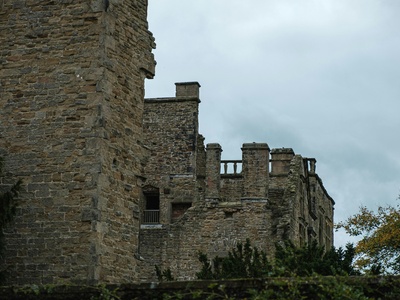
Ludgershall Castle
The flint-built ruins of a medieval royal castle and hunting lodge, favoured by King John. The remaining walls are part of the northern tower, set within extensive earthworks that are perfect for exploring.

